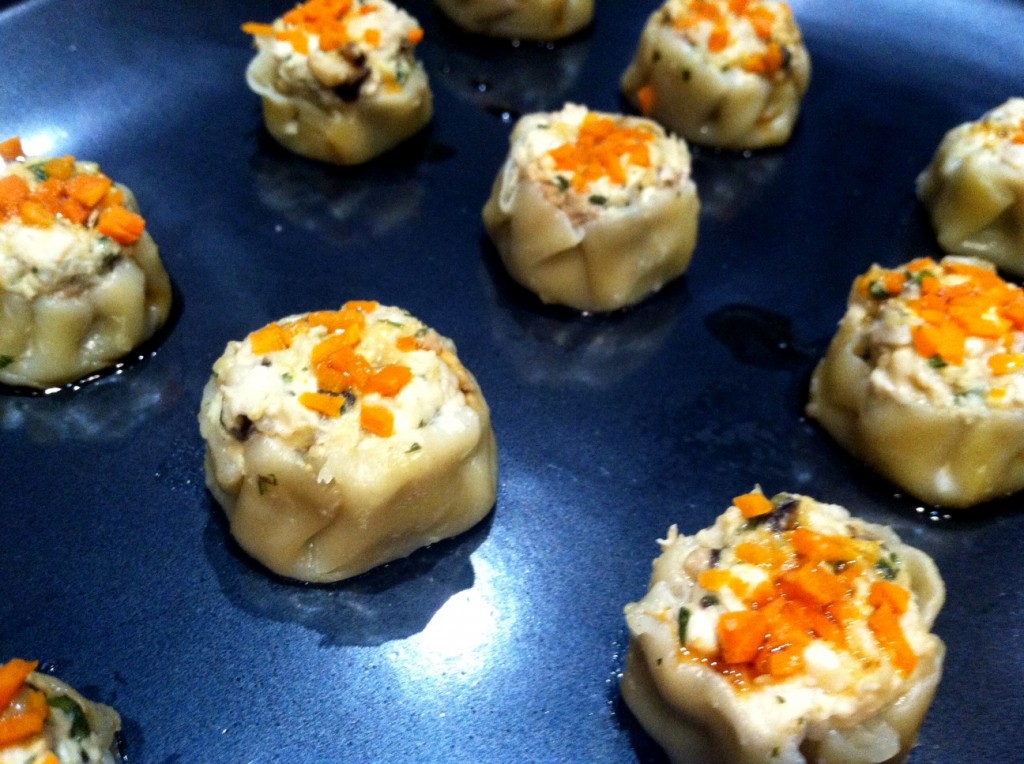 Kikkoman has been well known in my family as the de facto choice of soy sauce. Now, I’m not a foodie and my ability to distinguish good soy sauce from bad is about as good as my ability to distinguish a merlot from a cabernet, which is to say, slightly higher than random guessing. Just slightly.
Kikkoman has been well known in my family as the de facto choice of soy sauce. Now, I’m not a foodie and my ability to distinguish good soy sauce from bad is about as good as my ability to distinguish a merlot from a cabernet, which is to say, slightly higher than random guessing. Just slightly.
Nevertheless, the iconic Kikkoman soy sauce bottle with the red top has always been a mainstay at our home as well as the many chinese restaurants we frequented when I was a kid. Other soy sauces do seem to be either too watery or thick like molasses. There wasn’t consistency in other sauces.
Recently, I was a guest at an event learn about a new vision of Kikkoman together with Reneè, covering the soiree as bloggers.
The event was held at the Yerba Buena Center for the Arts in the South of Market Street district of San Francisco.
Here’s the nutshell: we arrived a bit late, so we missed the mingle/schmooze part of the evening. But, we arrived before any of the formal agenda-ed events took place. There was really just one item on the agenda, the showing of the Kikkoman documentary. Now, you’d wonder why a humble soy sauce manufacturer need a PR make-over and, well, so do I.
Kikkoman’s quite pristine and treat their workers like, well, like adults and colleagues. Are they branching into new markets? Going head-to-head with Heinz 57? Not quite that either, although I wouldn’t doubt that if they did go into battle against a major catsup manufacturer, they might very well win. Catsup is originally an Asian sauce btw.
Think about, it: why the weird name? In Cantonese, the sauce is pronounced, Gah-tsup. The “Gah” part means…uh, mumble-mumble (go ahead you can wiki this part) and “tsup” which means sauce. Feel free to study it up. So if Kikkoman goes back to the origins of the sauce and lay off the overuse of HFCS and other unnecessary ingredients, they’ll kill the Americanized version of an ancient chinese secret.
Anyway, we went upstairs and entered the screening room for a short presentation and documentary about the history of Kikkoman. We took our seats in the front row, as all the seats further back were all taken. The first part of the program was the ceremonial breaking of a sake cask. Various dignitaries from Kikkoman USA and major project leads from the head advertising company, Draft FCB.
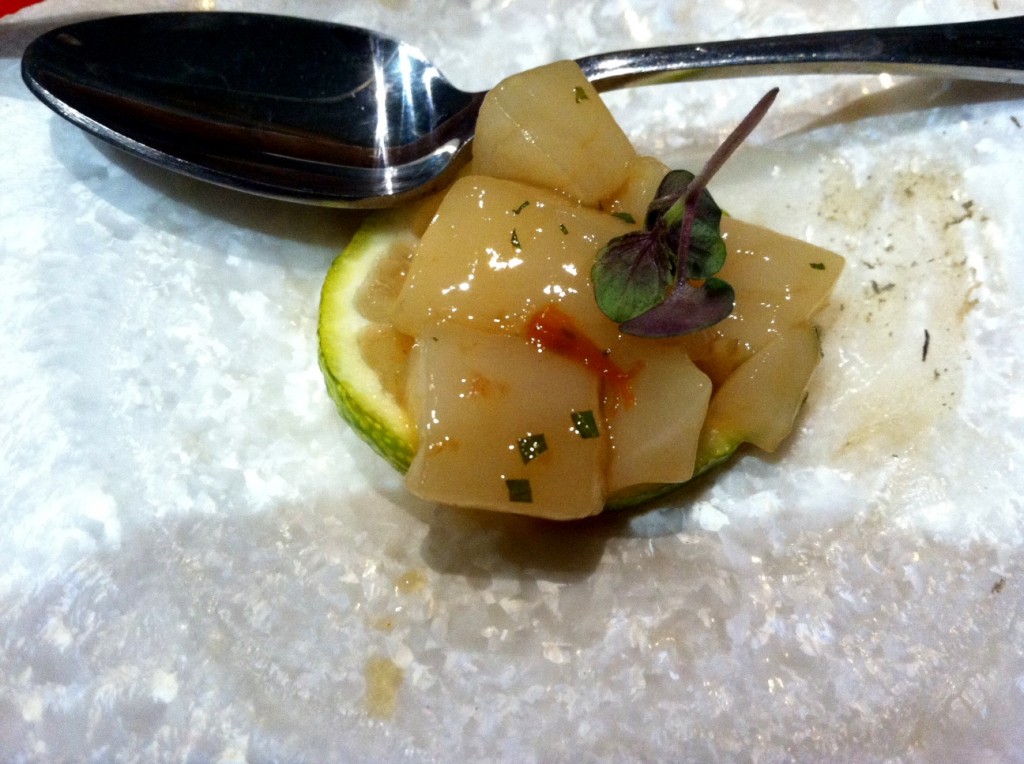
According to Japanese history/lore/mythology, it’s good luck to crack open a wooden cask of sake and drink the heck out of it. I don’t think there’s a need for any history or lore to get people to agree to such a proposal.
The four dignitaries each donned a Japanese article of clothing, to symbolize the historicity of the moment, as well as use it as a splash guard for the possibly spraying sake; and were each handed a wooden mallet. After one dry (heh-heh, I said “dry”) run, the four dignitaries, at the count of three, bashed in the top of the cask. The break on the wooden top looked too good to be “bashed” in, but perhaps wood does split that way.
At the same time as the bashing occurred, servers walked by and handed each one of us a wooden square cup filled with sake.
Now, I’m no lush, nor am I some college freshman who would nod off after a cup of PBR, but the quite tasty sake (a Kikkoman made sake, by the way) hit me rather hard. I can hold my wine, I can hold my beer and I can hold (some of) my liquor, but this sake went to my head quickly and I felt the effects in short order. Luckily for me, the video documentary was just about to begin, so the lights dimmed and my nodding head wouldn’t be noticeable to anyone.
Kikkoman, apparently, is a 300+ year old company. Technically, they can’t claim that in their legal literature as there is no documentation proving the age.
But the legend, with much of it handed down through oral traditions, tells of a wife of a shogun warrior who fled her town with her son in tow. Went into the bulrushes by the lower Cairo, allowed the Pharaoh… oops, wrong legend. Well, they went to Noda, just north of Tokyo, and started brewing soy sauce. The heart of their soy sauce, that which makes is so great is the koji, a fungus which is essentially the company’s literal secret sauce. The koji is a living, breathing entity that is used to create every new batch of soy sauce. It’s the yeast that’s used to make every San Francisco sourdough bread.
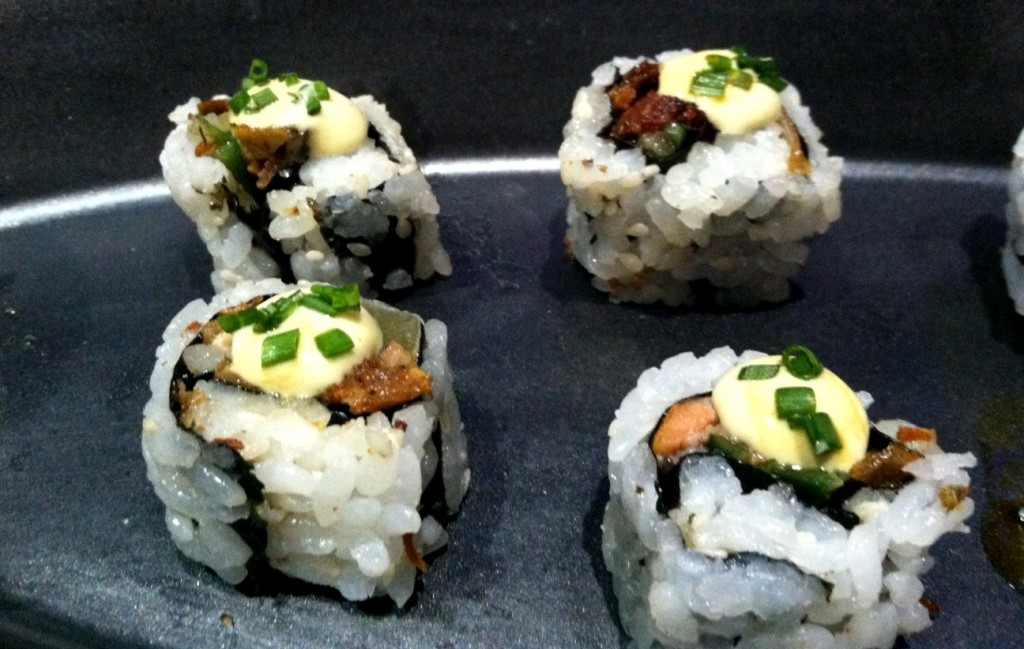
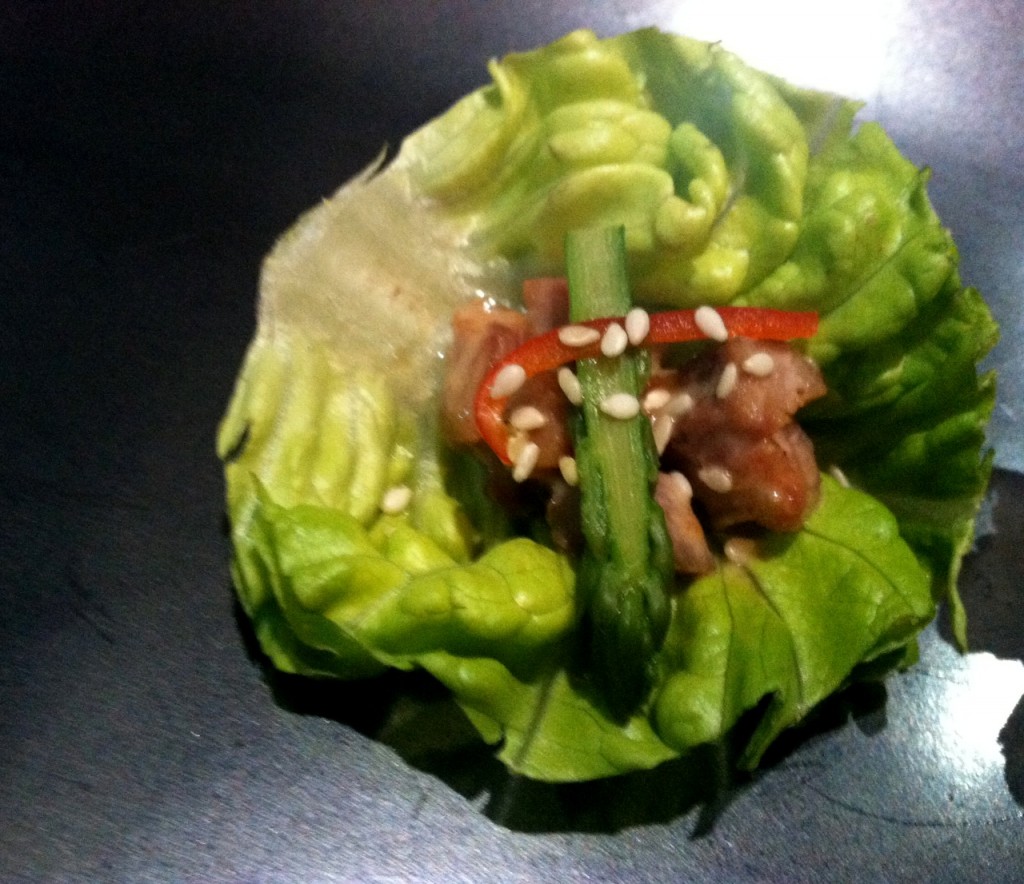
The documentary talks of the sixteen articles in the Kikkoman creed. Like a typical cryptic confucian maxim, Kikkoman’s tag line is Make Haste Slowly. That is, don’t be reckless, but don’t not take risks to move ahead.
Take conservative risks, but take them. The documentary’s highlight was the arrival of Kikkoman into the lives of middle America as they set their first foreign manufacturing plant in the middle of Walworth County in southern Wisconsin, among the cows and cheese and the great farming lands.
Kikkoman made a definite impact on the lives of those who worked there, highlighting a major difference between the Kikkoman way of treating workers, compared the vulture style of, say, Bain Capital. For example, if the company had to cut expenses due to lowered revenue forecasts, all employees would see their wages drop instead of indiscriminately laying off employees. Employees knew that even the head guy got a salary cut just as well. That certainly helps morale when it’s time to ramp up when demand returns.
The highlighting of the workers at Walworth County was quite stark, especially when juxtaposed to our very recent national election where one presidential candidate’s bona fides as an employer was put to the microscope. It hits you as a viewer when you contemplate, “Why couldn’t they [Bain] do that, instead of outsourcing people’s jobs and looting their pension funds?”
The documentary centered primarily on the business practices at Kikkoman. Yet the same time, it appeared that Kikkoman wanted to show off its product mix. So there seemed, to me, to be a disconnect between the documentary’s marketing intent and Kikkoman’s marketing goals.
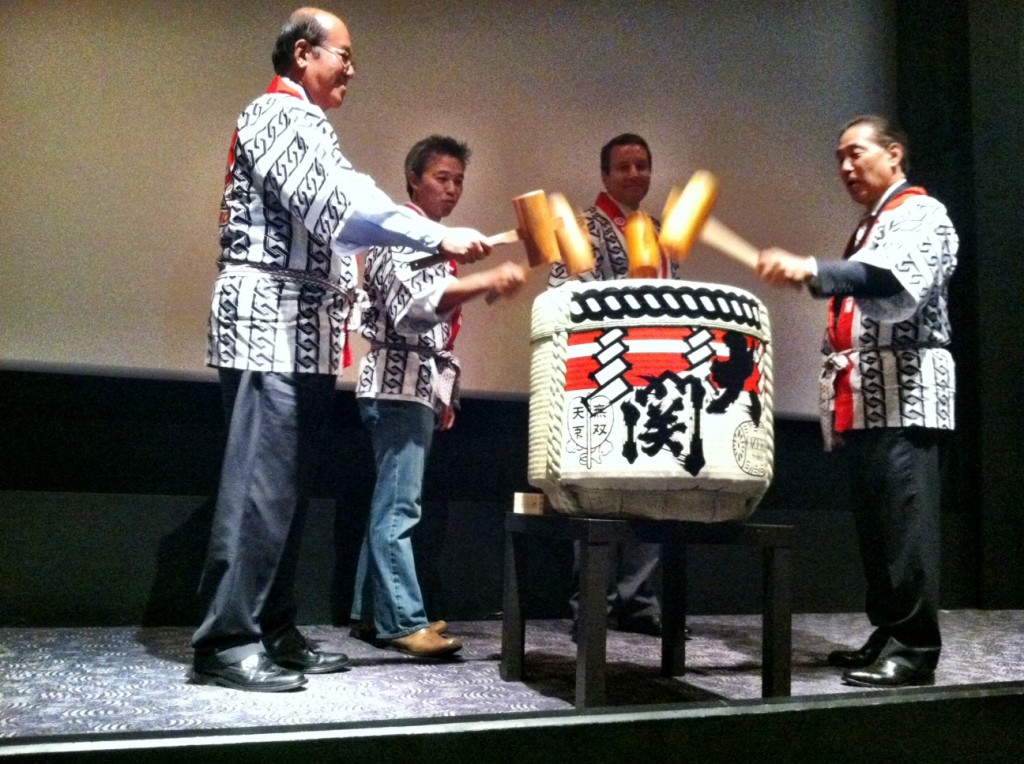
After the documentary, we headed back down to the main lobby for more hob-nobbing and sampling some wonderful bites, all infused with some Kikkoman. Oh yeah, and some more Kikkoman sake (and non-Kikkoman merlots). We ate well. (see photos above). And, did I mention the fabulous sake ceremony they performed on stage? (also above)
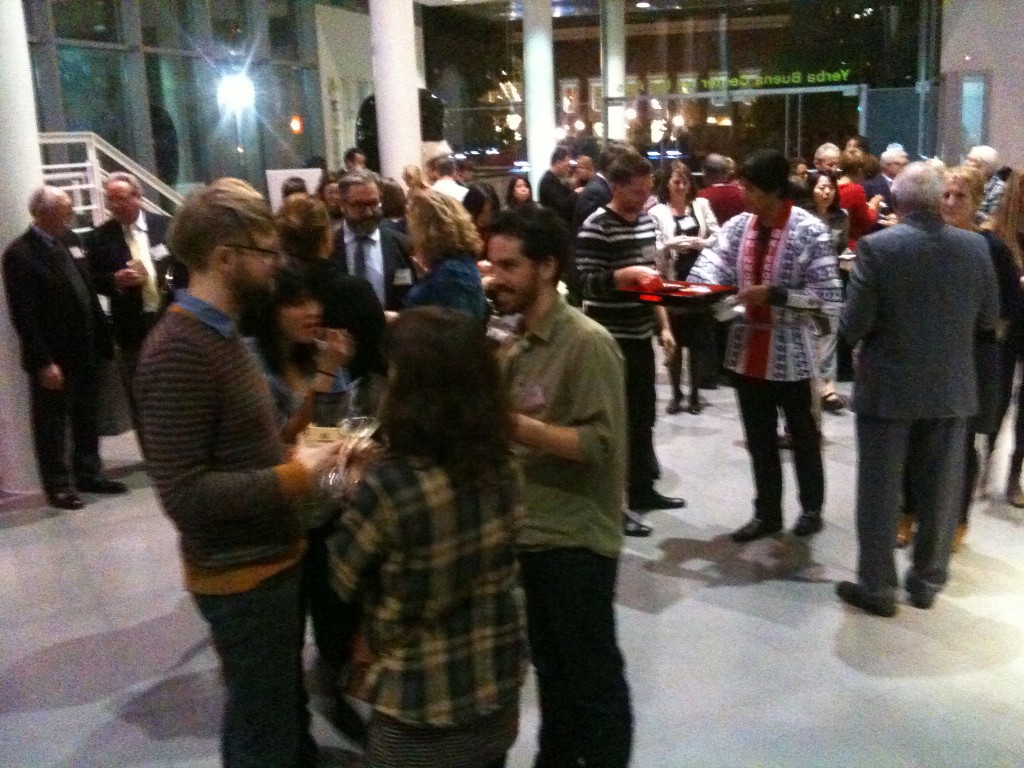
I tried the siu mai, which were smaller and more delicate than the usual ones offered at most Chinatown dim sum restaurants. These, however, had a very velvety texture and a great taste and finish. The scallop sashimi were very good. It’s funny how many cultures have similar types of food.
The chef, a renown sushi chef here in San Francisco, described the scallop sashimi served with Kikkoman’s many sauces as a japanese ceviche. I’ve always considered ceviche as south american sushi. Those scallops were quite tasty. More importantly, to both Reneè and I, was that we had an opportunity to meet up with press people and VIPs in the food world. We met Kikkoman’s very own manager of culinary development. Helen is the one in charge of making all these tasty bites. Got to get to know her, as I can expect any party she hosts to be a feast de résistance.
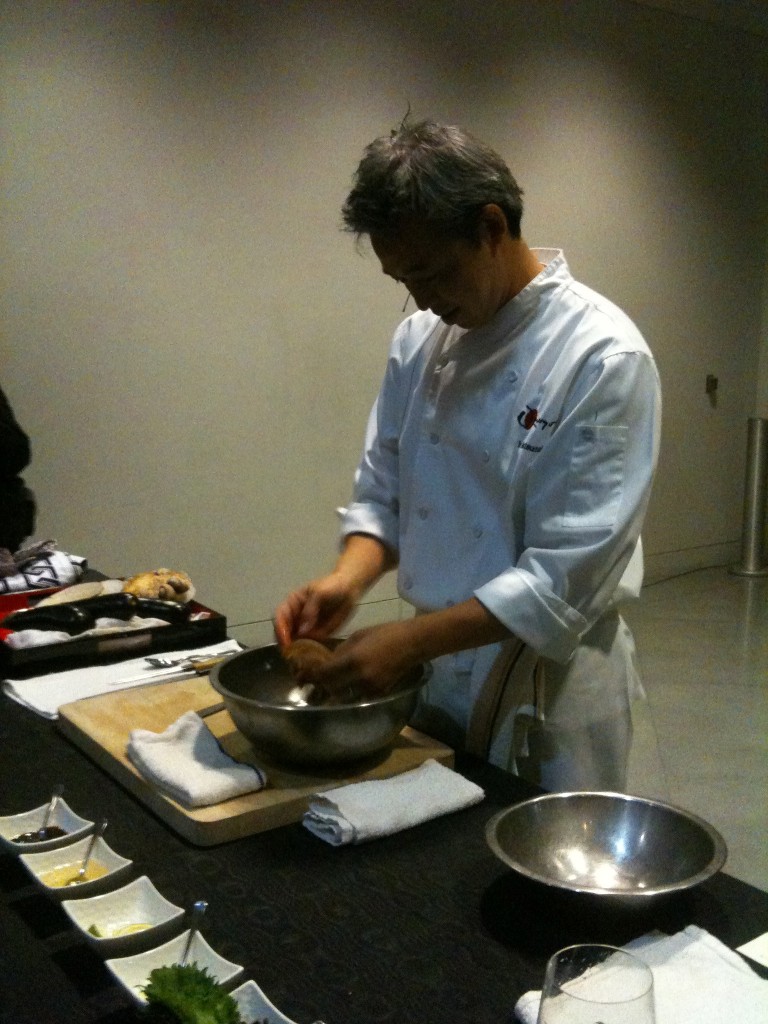
In the end, it’s clear. The proof is indeed in the pudding and those delectable tidbits were proof that a little bit of Kikkoman goes a long way. For me, without a doubt, the clearest way to send the message about Kikkoman is to offer these tastings.
Below are a few videos shot of the sake ceremony, Japanese chef/intro on-site giving a demonstration, as well as an intro to the documentary film, which explains a little bit of the history and the “why.”
Photos: group and chef shot Eric Dew. Food photos and videos Renee Blodgett.








